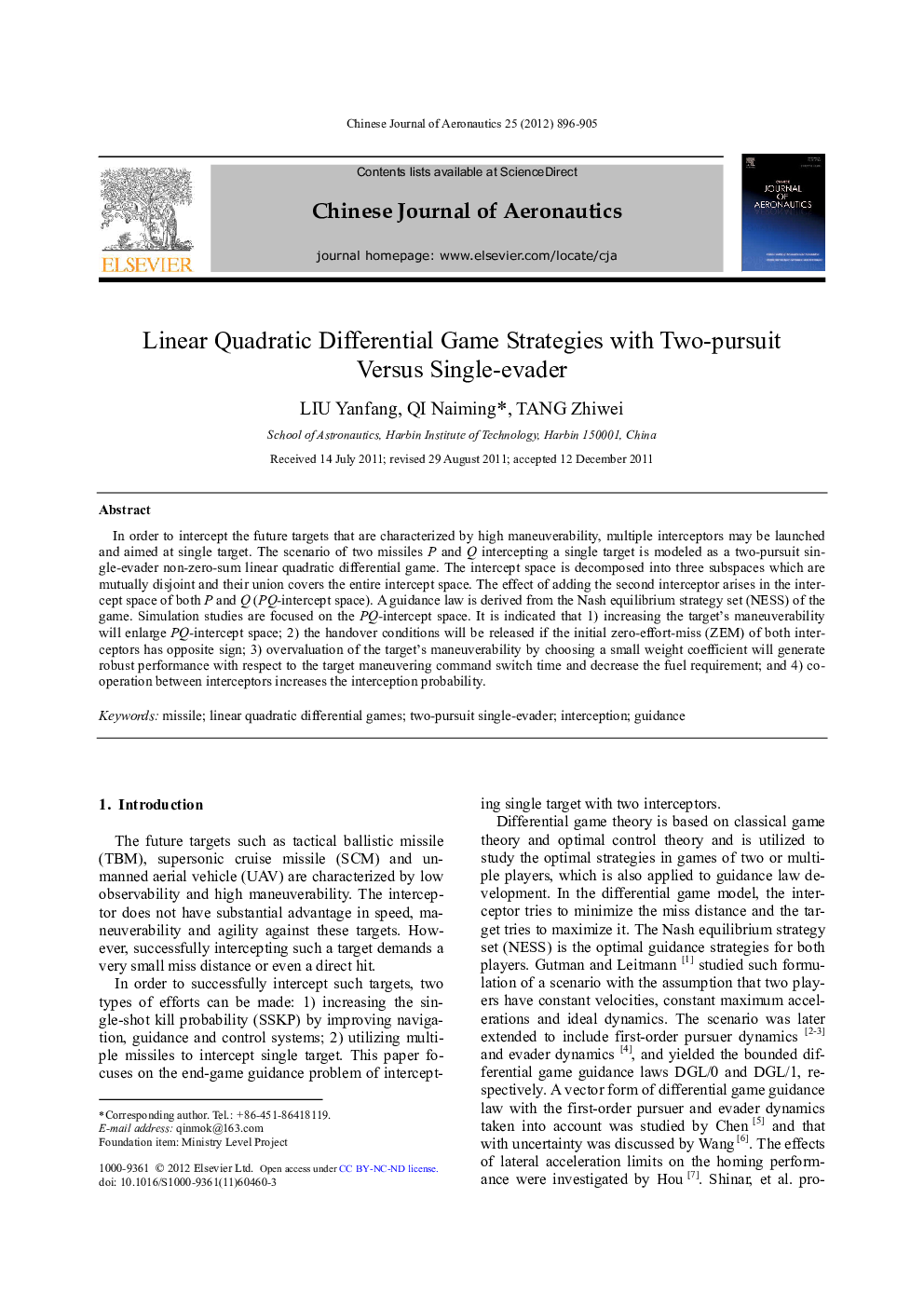| Article ID | Journal | Published Year | Pages | File Type |
|---|---|---|---|---|
| 765941 | Chinese Journal of Aeronautics | 2012 | 10 Pages |
In order to intercept the future targets that are characterized by high maneuverability, multiple interceptors may be launched and aimed at single target. The scenario of two missiles P and Q intercepting a single target is modeled as a two-pursuit single-evader non-zero-sum linear quadratic differential game. The intercept space is decomposed into three subspaces which are mutually disjoint and their union covers the entire intercept space. The effect of adding the second interceptor arises in the intercept space of both P and Q (PQ-intercept space). A guidance law is derived from the Nash equilibrium strategy set (NESS) of the game. Simulation studies are focused on the PQ-intercept space. It is indicated that 1) increasing the target's maneuverability will enlarge PQ-intercept space; 2) the handover conditions will be released if the initial zero-effort-miss (ZEM) of both interceptors has opposite sign; 3) overvaluation of the target's maneuverability by choosing a small weight coefficient will generate robust performance with respect to the target maneuvering command switch time and decrease the fuel requirement; and 4) cooperation between interceptors increases the interception probability.
